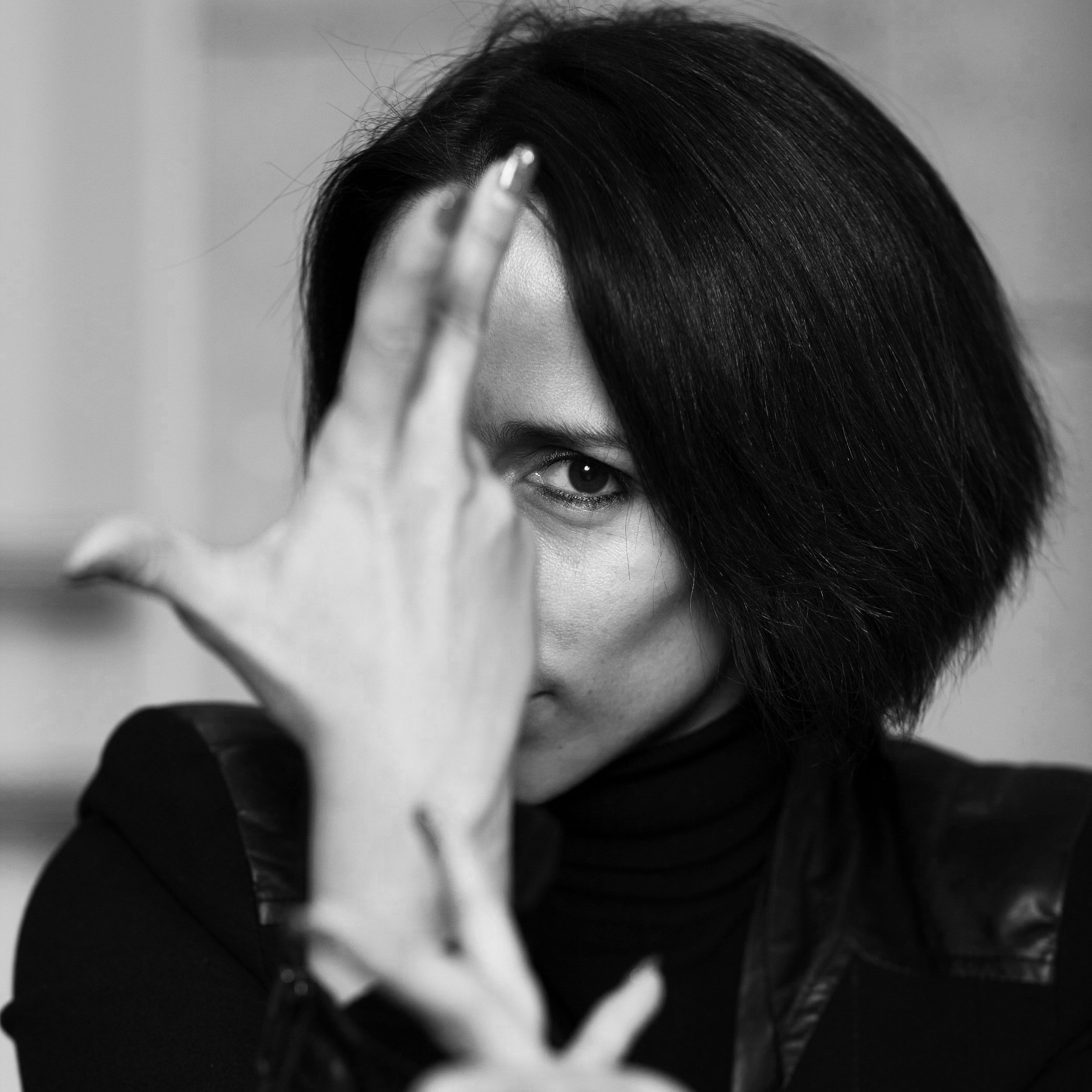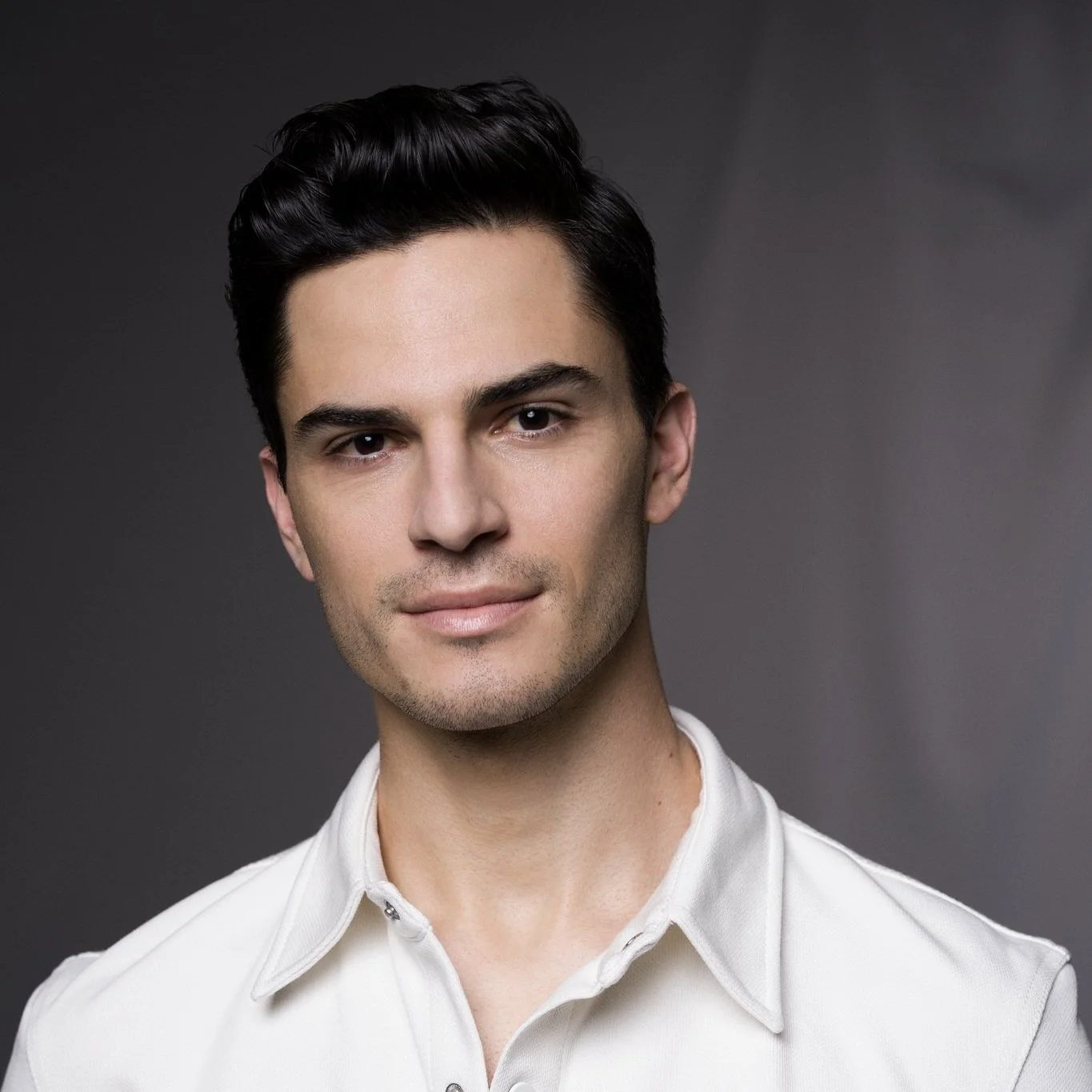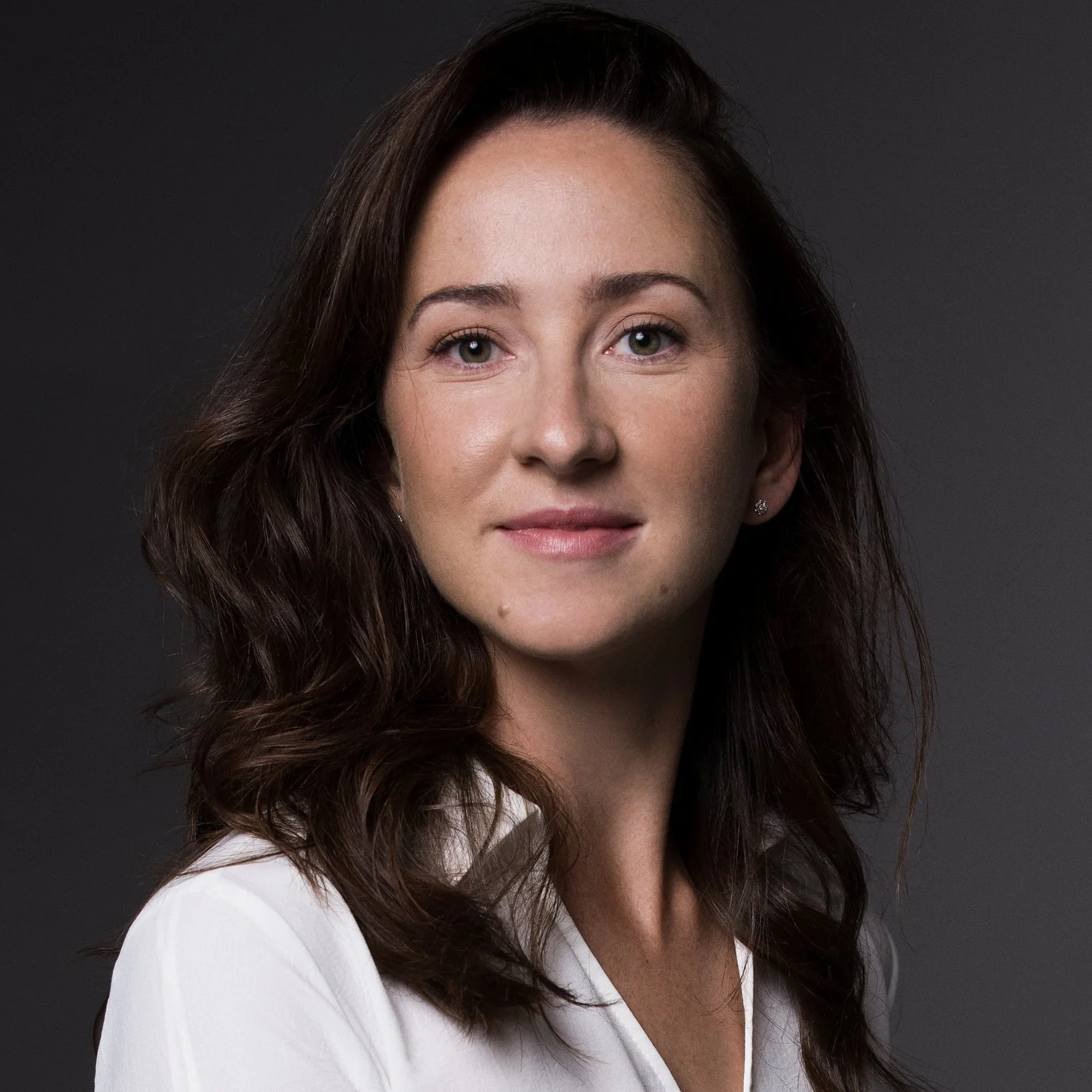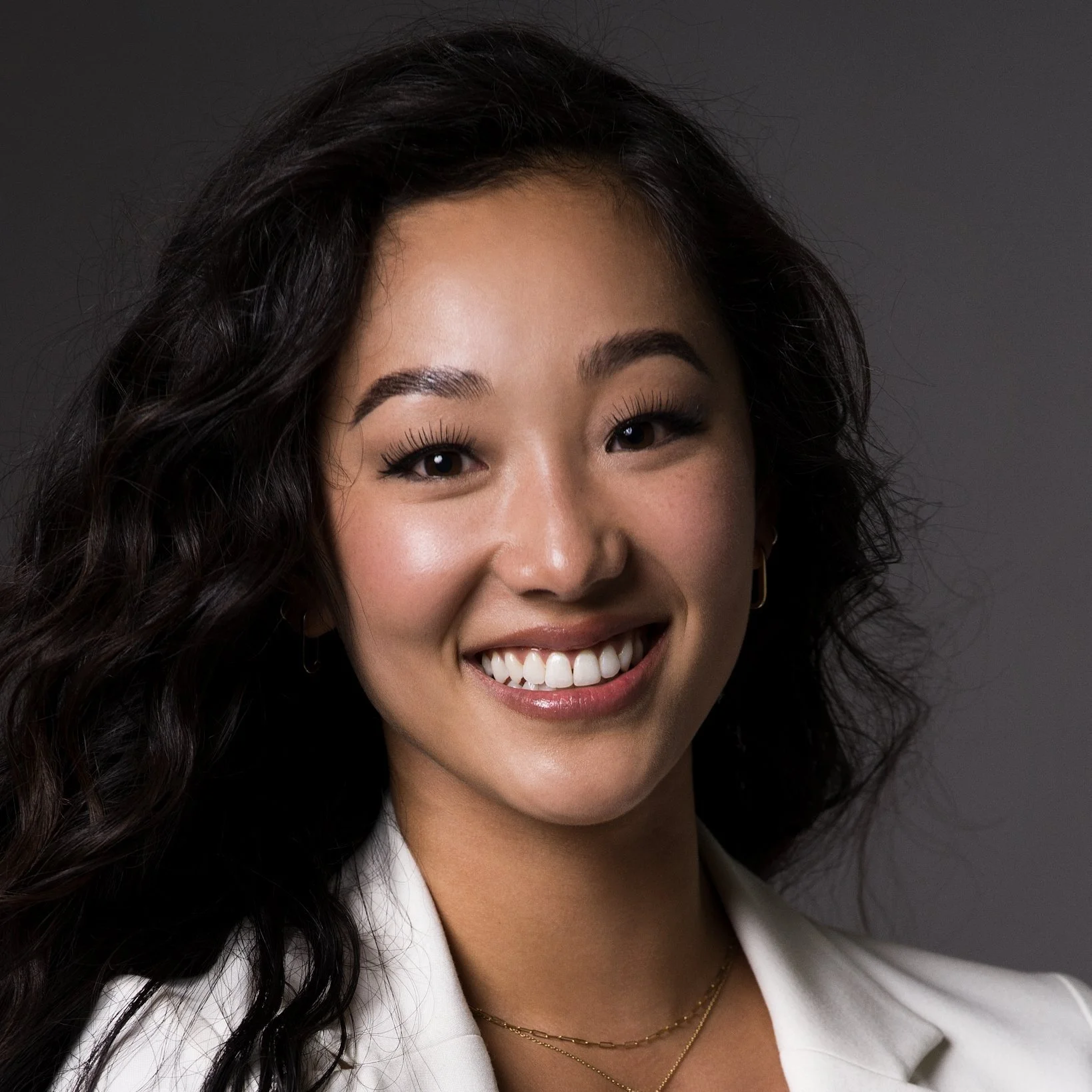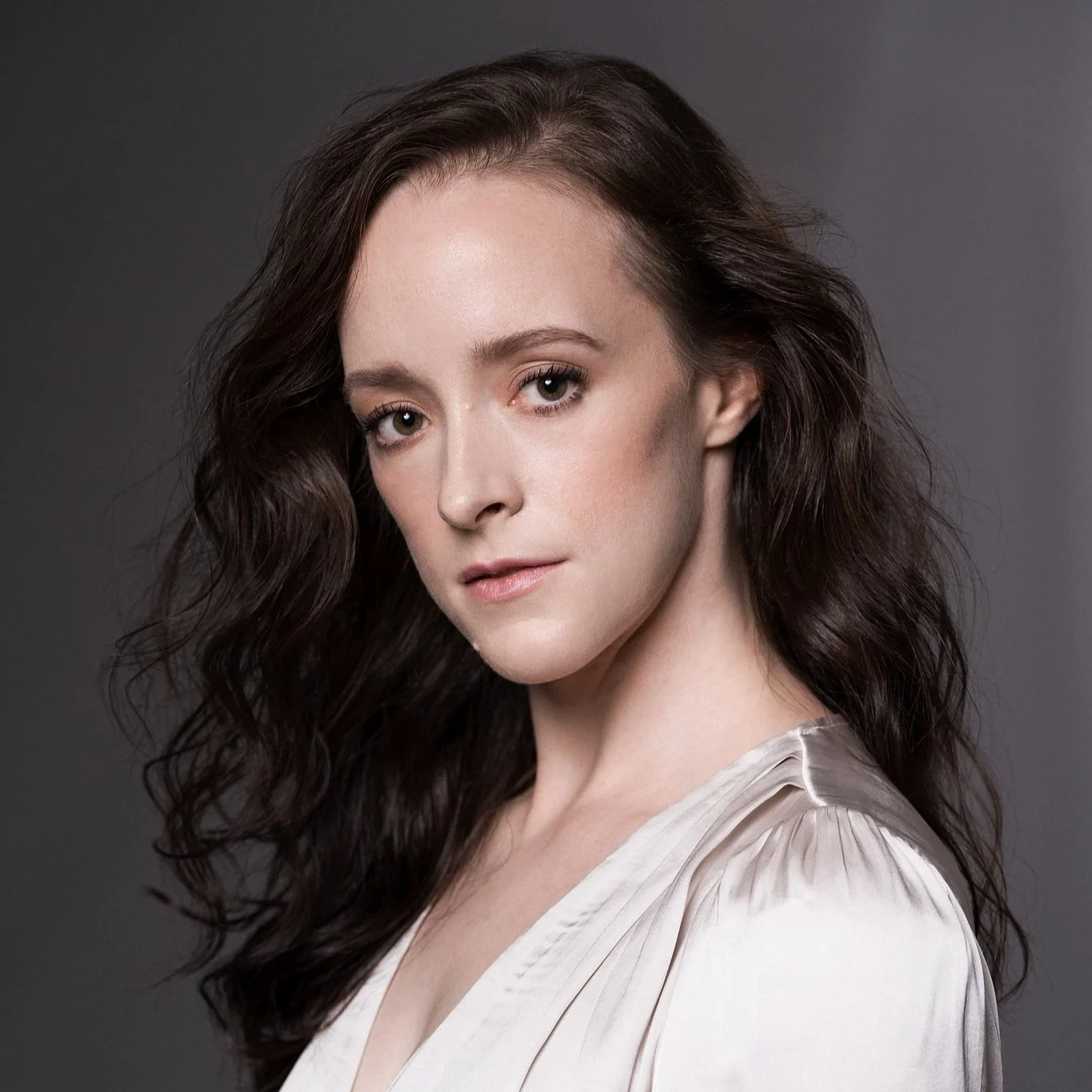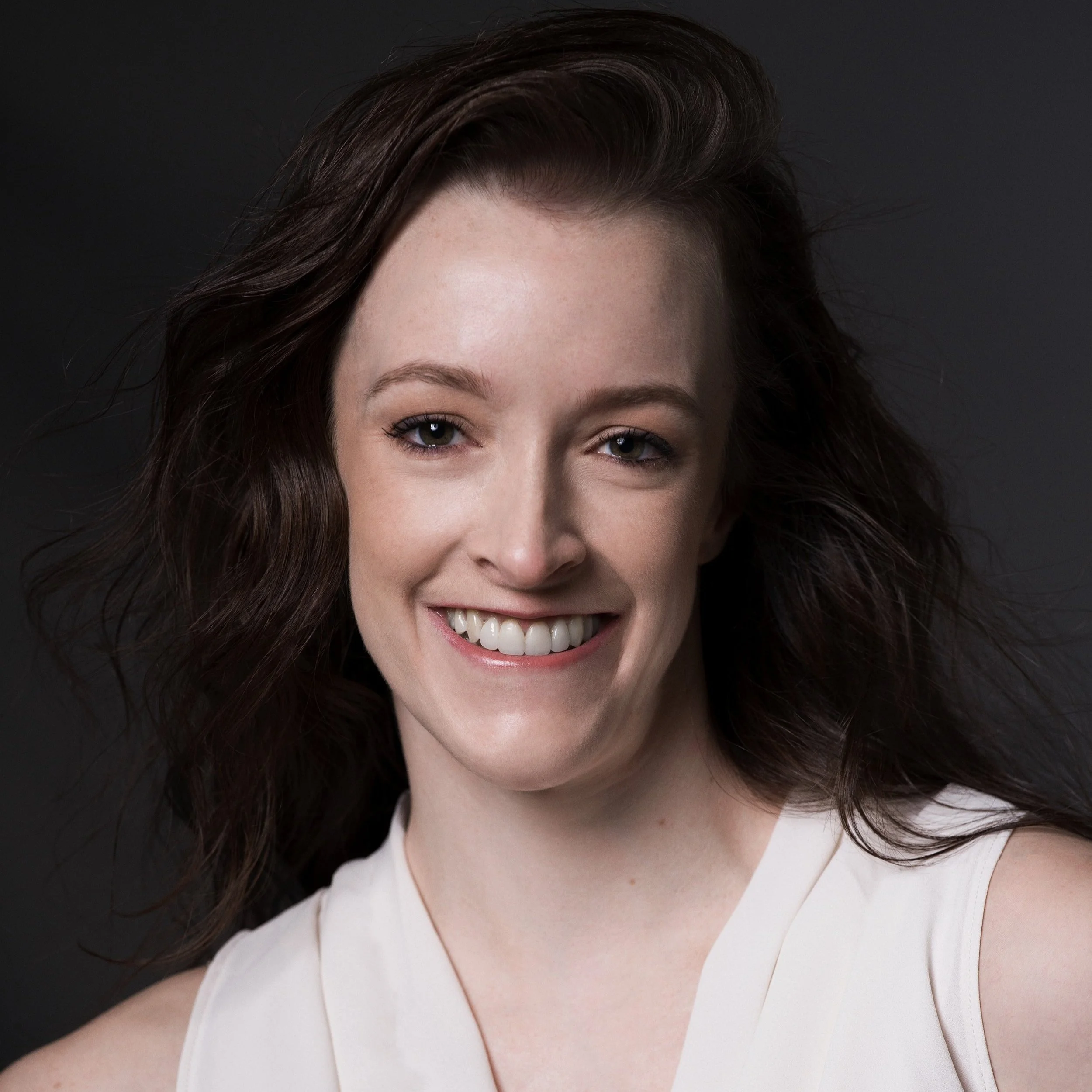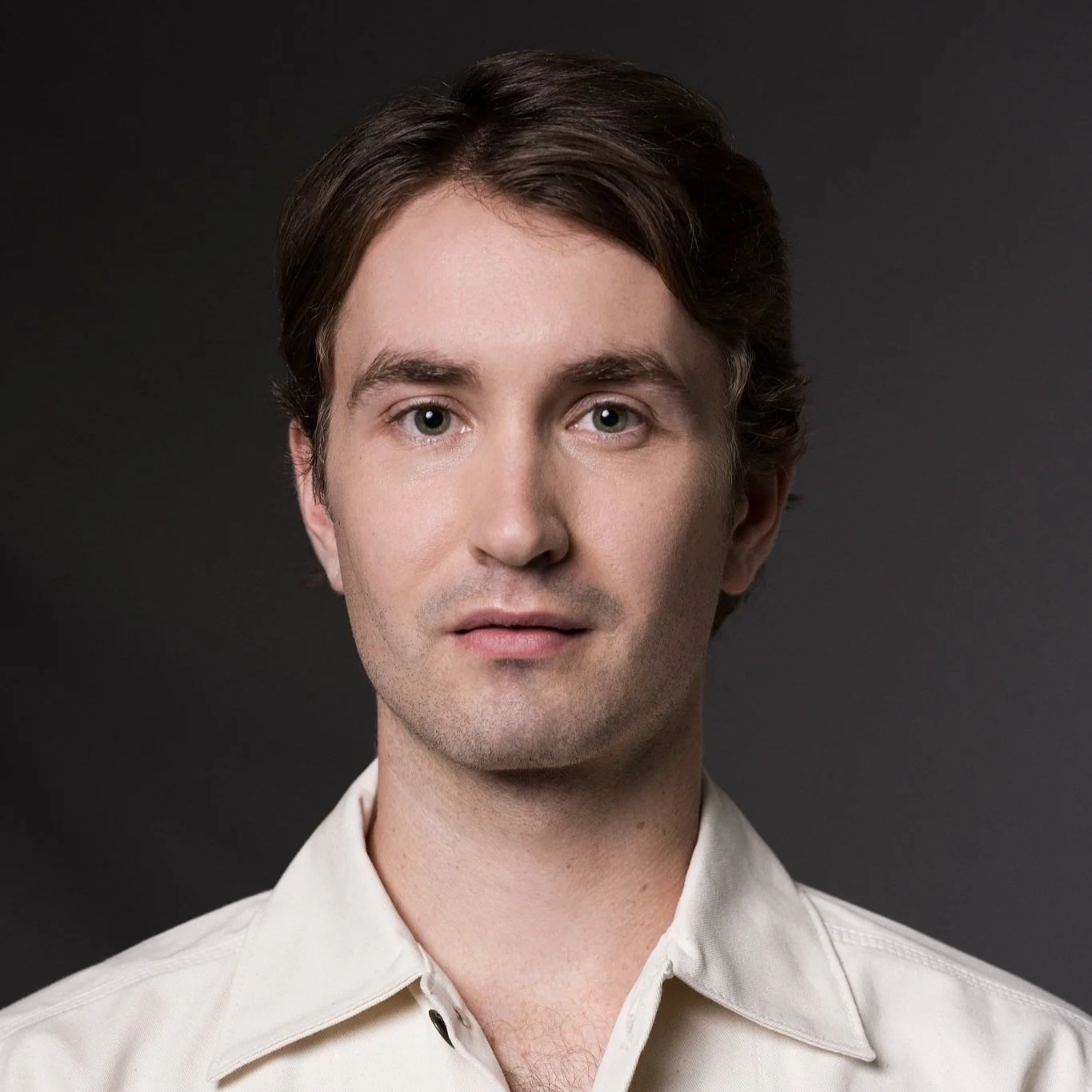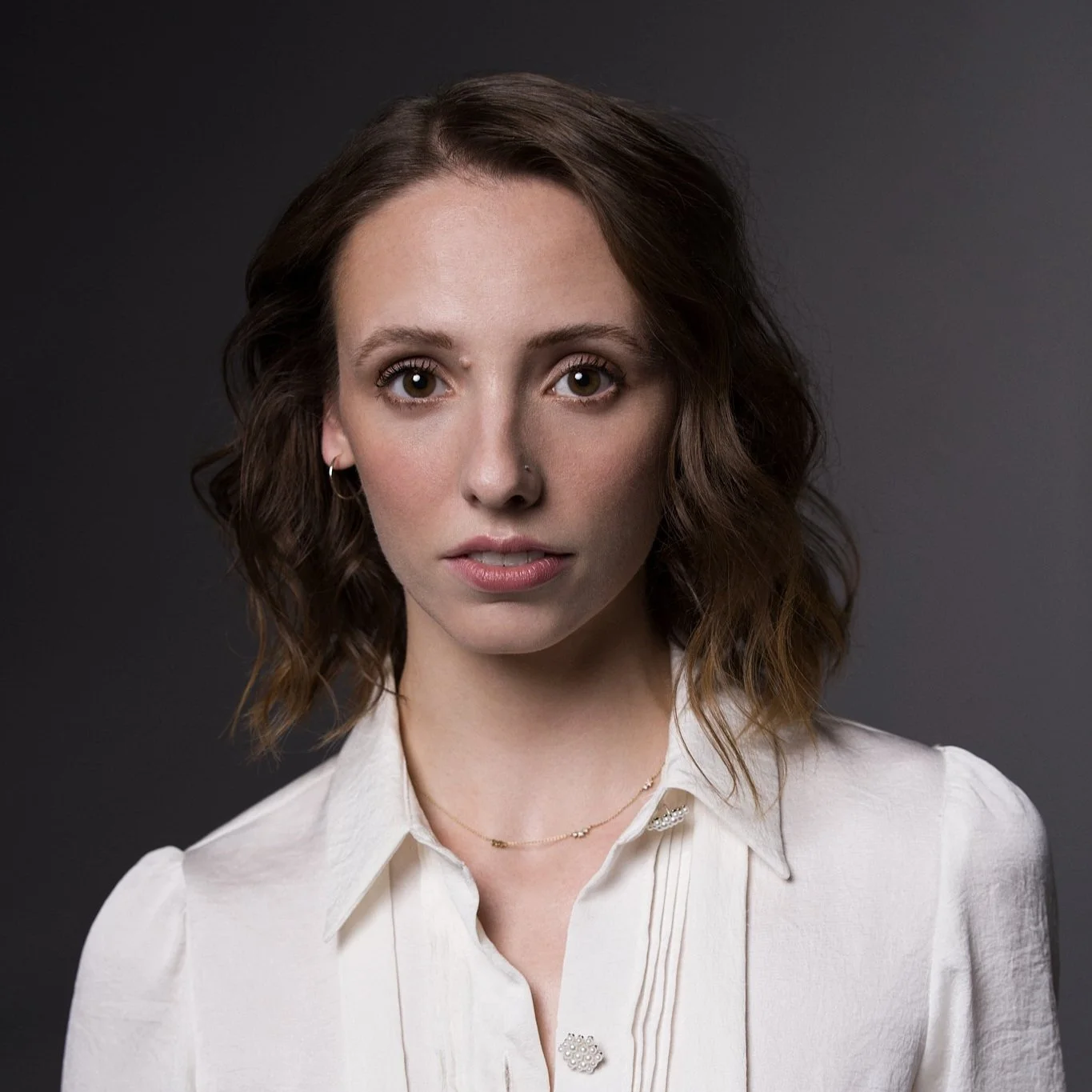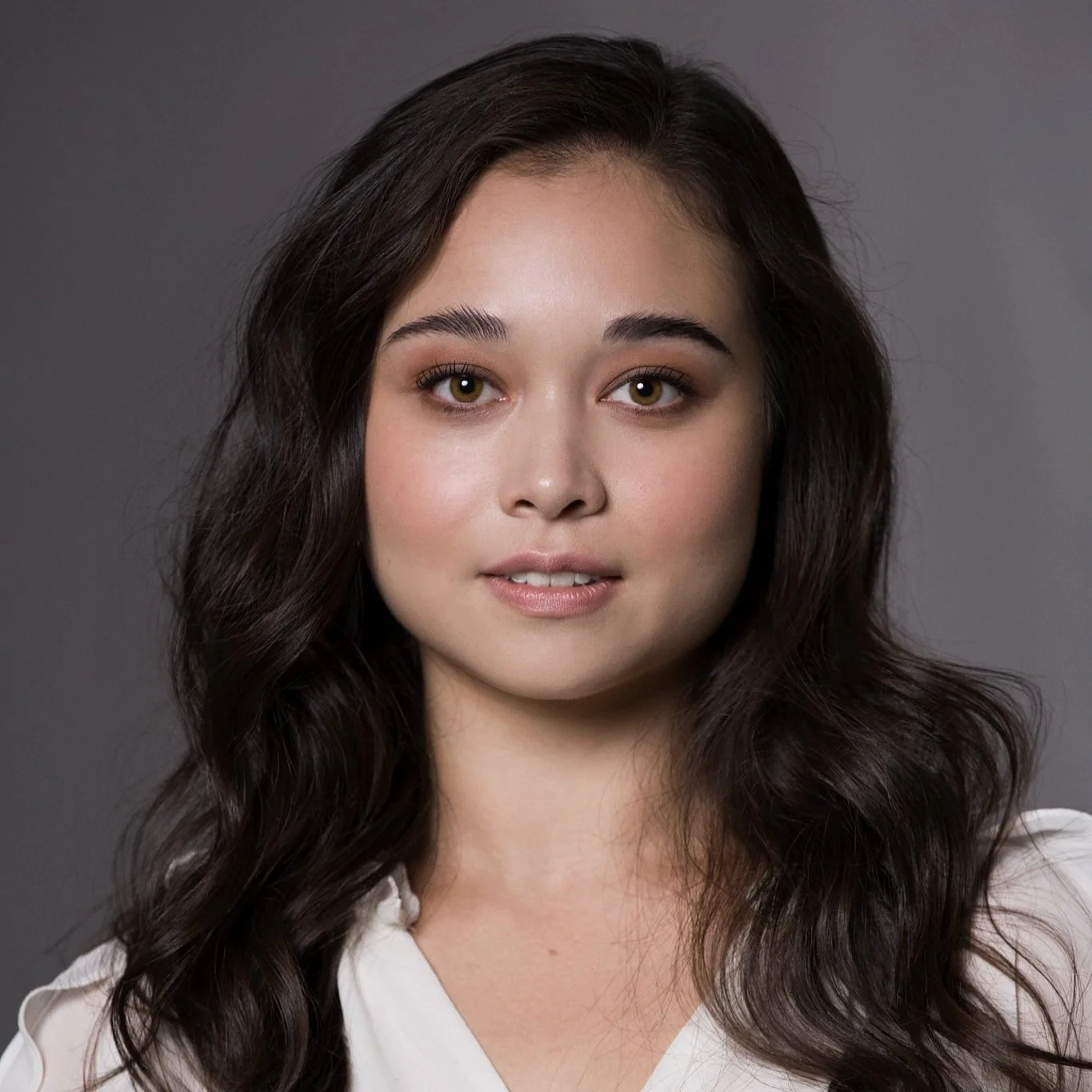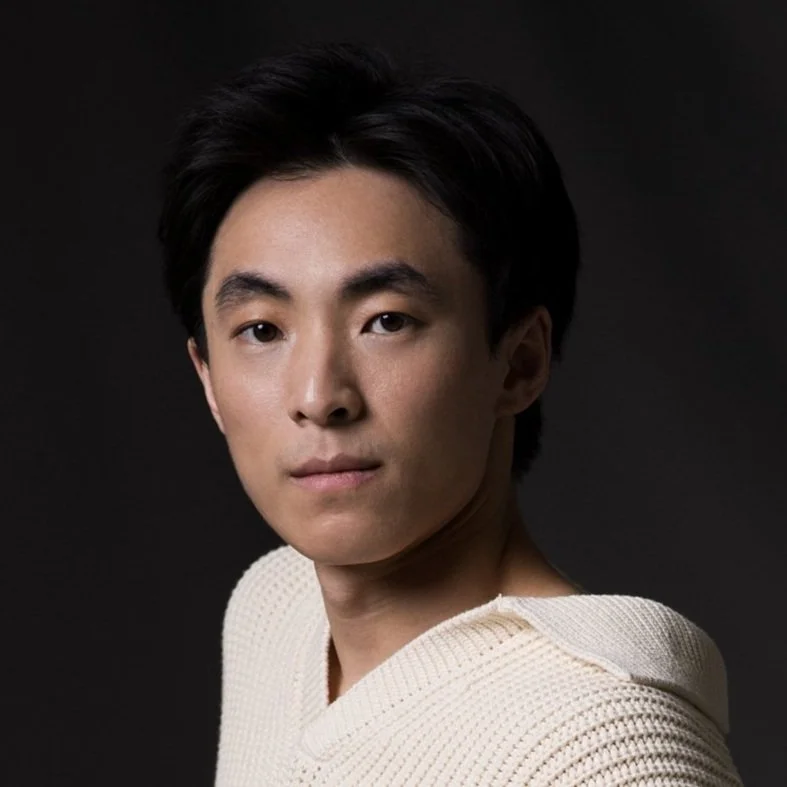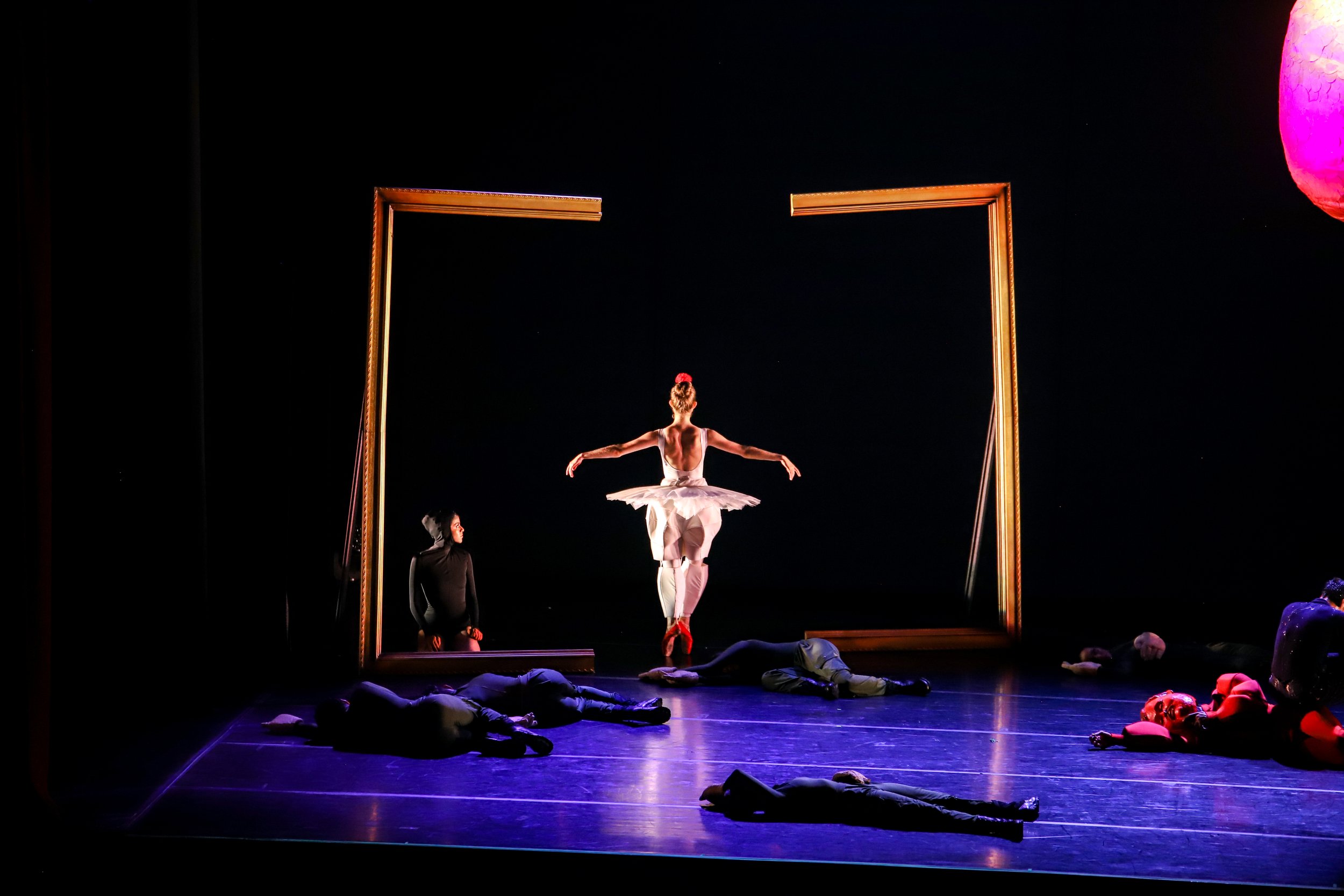
Message from the Artistic Director
Christopher Anderson| Artistic Director, Alberta Ballet
BOTERO is a journey of a beautiful international collaboration and we’re so glad you have joined us to be part of it!
Welcome to BOTERO - Annabelle Lopez Ochoa's newest full-evening work inspired by Colombian artist and activist Fernando Botero.
This is Alberta Ballet’s first time collaborating with Annabelle, a true pioneer within our art form. A prolific choreographer, she has created with dozens of prestigious dance companies, and her work is performed on stages around the world.
The ballet you’re about to see is an extension of a shorter piece that Annabelle created in Colombia for Ballet Metropolitano de Medellín. This playful ballet is enriched by the vibrant compositions of Juan Pablo Acosta and the brilliant designs of Diana Echandia.
The innovative juxtaposition of styles is a great example of the boundary-breaking work being created today. It’s been incredible to have Annabelle and Diana in our studios, working alongside the Alberta Ballet dancers, to realize this expanded work.
I am very proud to support a vision that ballet companies around the world are pursuing – creating space and opening their stages for new ideas and a new future for concert dance.
This has been a phenomenal season for new works, and I’d like to congratulate the artists of Alberta Ballet for their thoughtful performances across a broad spectrum of styles: from the forward focused works of Cathy Marston, Alysa Pires, and Helen Pickett in Away We Go to the cherished classic of the romantic era, Giselle. The dancers and artistic team have generously shared their passion for this art form we all love. I am privileged to support and work with these inspiring artists.
Please enjoy this tremendous season finale, and thank you for supporting Alberta Ballet and the arts in Alberta!
Message from the Choreographer
Annabelle Lopez Ochoa
BOTERO is a ballet inspired by the many paintings and art works of Fernando Botero. This Colombian artist is famous for his distinctive style characterized by voluminous and exaggerated figures, also known as Boterismo.
When I heard the anecdote that Botero sometimes paints a fly to achieve the perfect balance in his artwork, it sparked immediately an idea for a ballet.
I imagined that in the moments of solitude and creative retreat of the artist, a fly would surge in his studio and accompany him in a dazzling journey of creativity where all the characters he ever painted would come to life from the canvas and step out of the frame to confront him.
Art is intrinsically connected to an artist's personal experiences and surroundings and, it is subsequently translated into an elevated form through his/her paintings. To reverse this elevated form of frozen images into real people and moving images is a fascination I have had since childhood. As a child I believed that portraits came to life at night when I was asleep. Now they come to life in my ballets.
According to Fernando Botero, art is there to please and entertain. He disagrees categorically with critics stating that when art pleases, it automatically prostitutes itself. He often explores themes of power, politics, religion, and the human condition, but he always finds a way to incorporate a touch of satire and humor.
I am grateful to have been given the opportunity to share bits and pieces of my Colombian culture through this new ballet and I welcome the Canadian audience to this whimsical journey full of surprising shapes and colors designed by Diana Echandía, and accompanied by the wonderful music full of Latin rhythms by Colombian composer Juan Pablo Acosta.
About the Music
Juan Pablo Acosta
BOTERO’S music is mainly inspired by the sounds of the city of Medellin, Colombia (the painter's hometown) in the first half of the twentieth century, where tango and rural music from the Colombian Andes were heard in the cantinas and on the radio.
The mandolin is the instrument that begins and ends the work and appears in several of the scenes as thread of the music, as it was the object that inspired Botero, his particular conception of volume due to the proportion of the small soundboard hole with its rounded and voluminous body.
In this musical creation, traditional Latin American and Spanish music are combined with electronic and orchestral music, enriched with diverse and contrasting nuances like the themes of Botero's works.
About the Costumes and Sets
Diana Echandía
To conceptualize the characteristics of Botero’s very distinct style, I searched my way into the deconstruction of shapes and volumes so that the dancers would keep parts of their body free to express themselves. For example, each character is allocated the idea of volume "Boterismo" in different parts of their body such as the head, hands, arms, belly, or legs.
By deconstructing the frames of paintings, the stage converts itself into a dreamlike space in which the negative space can either be used as a within or outside the painting. This allowed the choreographer a multitude of possibilities during the creation process.

Act 1
Scene 1 - Naranja
“In Botero's Naranja (Orange), a worm appears to pierce the fruit; in addition to the memory of the tradition of still life, this detail creates a tension between forms of such different dimensions.” ~Annick Casciero de Sanjurjo.
Scene 2 - Toreros
Botero was sent to the school of tauromachy at the age of 15. Because of his extreme fear for bulls, he never became a matador but started painting them instead.
Scene 3 – Meseros
"I don't paint fat women. Nobody believes me but it is true. What I paint are volumes.” ~Botero
Scene 4 – BoteroSutra
“I tried to be subtle in my approach to the subject of eroticism, and that’s why you don’t see the sex [organs] of the characters.” ~Botero
Scene 5 – Dancing Fruit
“Artists today are no longer interested in the theme of still lives. This is a pity because this genre has such a great tradition.” ~Botero
Scene 6 – Tango
Although tango was born in the middle of the 19th century in the Rio de la Plata, Medellín became an iconic place for this dance in the 20th century when Carlos Gardel, famous tango singer died in a plane crash in Medellín (1935) and became a myth overnight.
This cult for the tango in Medellín cannot be absent in the work of Botero, who is convinced that art must seek universality in the traditions, the everyday life, and in the picturesque.
Scene 6B - Pedrito
In 1974, Fernando Botero loses his four-year old son Pedrito in a car accident. This event coincides with the age he was when his father David Botero died. He dedicated a series of drawings and paintings to his memory.
Scene 7 – Pierrot
“My work is a self-portrait of my mind, a prism of my convictions.” ~Botero
BOTERO Libretto
Act 2
Scene 8 – Circo
"The circus allows one to be logical and unreal at the same time. In the circus, all is possible: there can be a man with two heads or a character with a green face.” ~ Botero
The series “Circo” arose after "Abu Ghraib", in which Botero portrayed the torture and pain experienced in Guantanamo Bay. Feeling exhausted after those paintings, Botero searched for a theme that would allow him to recover, through color, shapes, expressions, joy, and optimism.
Scene 9 – Botero musings
“I have not found a thing that gives me more pleasure, excitement, and that fulfills me more than painting.
I paint for myself. I paint until the painting gives me pleasure. I want to die painting.” ~Botero
Scene 10 - Blanco y Negro
In 1995, Botero’ sculpture ‘The Bird' was used as a "Trojan Horse" to detonate 10 kilos of explosives on Plaza San Antonio killing and hurting many people. The artist decided not to restore nor replace the sculpture. He preferred to leave the work in ruins and offered a second copy of the work, in exchange for the 'Wounded Bird' to remain next to the new 'Dove of Peace', "as a reminder of the imbecility and criminality of Colombia.
Scene 11 – Caballos y Obispos
In 1949, Botero was expelled from college for having published an article on Picasso's painting in the newspaper El Colombiano, which was labeled communist by the institution's rector. This censorship of expression would be one of the aggravating factors of the split between political parties that would lead to violence in Colombia during that period. This is the origin of the masterpiece painted in 1958: Los obispos muertos (The Dead Bishops).
Scene 12 – Paloma
“I often think about death, and it saddens me to leave this world and not be able to paint more. I love it so much.”
~Botero
Scene 13 – Escobar
Botero was reportedly angered that two of his paintings were found in the drug lord Pablo Escobar’s home after the kingpin was slain 1993. The death of Escobar, however, did not end the violence of Medellín, and the artist himself was victim of a failed kidnapping in 1994.
Scene 14 – Resiliencia
“Art should be an oasis; a place or refuge from the hardness of life.” ~Botero
Original concept by Ballet Metropolitano de Medellín
Choreography by Annabelle Lopez Ochoa
MUSIC CREDITS:
Music by: Juan Pablo Acosta
Violins: Marco Blandón and Eduardo Mora
Cellos: Atamaica Ruiz y Tatiana Pérez
Bandoneon: Marco Blandón
Guitars and keyboards: Juan Acosta
Piano: Johan Ramírez
Bandola: William Posada
Clarinet: Johan Pérez
Trombons: Edwar Montoya
Percusión: Sebastián Forero
Recording, mixing & mastering: Juan Duque (409 Estudio)
BOTERO CREDITS
COSTUMES AND SETS
Set and Costume Design: Diana Echandía
In house: Diana Echandia LAB
Costume team leader: Julián Sánchez, Lina Rodríguez.
Tailor/Stitcher: Claudia María Ríos, Daniela Giraldo, Beatriz Cano, Mateo Zapata, Alexander Orozco, Natalia Niño, Diana Marcela Meneses.
Set Assistant and Costume Designer: María Camila Bustamante, Ana Milena Díaz
Headdresses and Horse masks: Diana Echandía, Gabriela Echandía, Juan Pablo Hoyos.
Assistant tailor and headdress: Ana Misas, Yefferson Salazar, Olga Elena Orrego, Gloria Domínguez.
Production assistant: David Estrada
Collaborators:
Specialty production art: Volume hands, Fly headdress and Big head mask of characters “Obispos”, “Pablo Escobar”, “Pierrot”: Armando Moncada
Specialty production art: Horned headdress : Mauricio López
Horse masks structures: Pablo Hoyos
Set production: Golden Frames and blue stairs: Marino Montoya
Set production: Botero’s orange: Paulina Restrepo
Renders: Juan David Vélez
Additional frames built by F&D in Calgary, Alberta.
BOTERO Artistic Team
-
The Colombian-Belgian Annabelle Lopez Ochoa completed her dance education at the Royal Ballet School of Flanders. After a 12-years long dance career in which she danced in various European companies such as the Scapino Ballet, she decided in 2003 to focus her energies solely on choreography. In that same year she was hailed “rising star of the Dutch dance scene” (NRC newspaper) and only 7 years later the Temecula Performing Arts Examiner wrote; “Ochoa is truly a masterful choreographer with an edge for what dance can and should be in this constantly changing industry.”
In her 20-year career as a choreographer Annabelle has carved a position of award-winning and sought-after choreographer, creating more than a 100 works for 74 dance companies around the world such as the New York City Ballet, Hong Kong Ballet, Dutch National Ballet, Ballet Nacional de Cuba, English National Ballet, West Australian Ballet, San Francisco Ballet, among many others. She is known to create full-length narrative works, and just finished choreographing her 10th narrative ballet “Coco Chanel, the life of a fashion icon” for the Hong Kong Ballet.
Annabelle is one of the world’s busiest choreographers (a quote from Wendy Perron, Dance Magazine 2016). In 2006, she imagines a dance for the celebrated Dutch fashion designer Viktor & Rolf’s project at the van Gogh Museum in Amsterdam. Between 2005 and 2015, as a member of the Dance-Theatre collective “Fantasten” she successfully created physical theater plays, which have been performed in numerous theaters and festivals throughout the Netherlands.
During the pandemic of 2020-21, Lopez Ochoa pioneered remote choreography and dance film creations premiered online. She created in total 22 dance films.
Annabelle is the recipient of the prestigious Jacob’s Pillow Dance Award of 2019. She is also the program director of the Contemporary Ballet Summer program of the School at Jacob’s Pillow.
-
Diana Echandía is a Set and Costume Designer with 10 years of experience.
Throughout her professional career she has explored diverse formats such as theater, contemporary dance, performance, ballet, musical artists' shows and audiovisual projects. She is a professor of design at the Universidad Pontificia Bolivariana and the Universidad de Medellín. In her LAB she also explores garments from a vision of "design for all", creating for all genders and bodies.
She has a Master's degree in Costume Design for Theater and Film from the Escuela Universitaria de Artes TAI in Madrid and graduated from the Universidad Pontificia Bolivariana as a Costume Designer. She also studied at the Universidad Nacional Autónoma de México at the Escuela de Literatura Dramática y Teatro in Mexico City.
She has worked with directors such as Annabelle López Ochoa, Rafi Maldonado, Rafael Palacios, Juancho Valencia, Felype de Lima, Juan Fernando Vanegas, Felipe Caicedo, Yndira Perea, among others.
-
Musical director, composer, musical arranger, producer, performer. Bachelor of music, graduated in classical guitar, with a master’s degree in Latin and Caribbean Music at the University of Antioquia, with a CUM LAUDE distinction to the research work.
Nominated for the 2020 Latin Grammy awards with Los Cumbia Stars, and musical director and composer of BFDA for 20 years, touring in around 600 local and national musical performances and 200 international ones in 18 different countries
Some of his works have been played by the Philharmonic Orchestra of Medellin; (Gabotero), Petrona Martinez (where the musical piece “La Cantadora” stands out, as it was included in the “Ancestras” álbum, winner of a Latin Grammy in 2021), and others important figures of the Colombian traditional music.
In 2023 he`s composing for the Houston Ballet for “Delmira”, directed by Annabelle López.
-
Scott Reid is a set, lighting and projection designer who has been designing for theatre, opera and dance for over 30 years. Some previous credits for Alberta Ballet include designing lights for Memory Room, and sets for Our Canada, Class Acts, and Fumbling Towards Ecstasy.
Scott is a Calgary-based designer whose work has been seen across Alberta, including at The Citadel Theatre, Calgary Opera, Theatre Calgary, and Decidedly Jazz Danceworks, as well as across North America. He has enjoyed designing for such diverse projects as theatre for young audiences touring shows, new plays, large-scale opera, theatre, dance, and immersive experiences. scottreiddesign.com
-
Christopher Anderson began his tenure as Alberta Ballet’s Artistic Director in July 2022.
Before joining Alberta Ballet in 2015, Anderson enjoyed a 16-year career in professional dance. A graduate of Purchase College’s SUNY Conservatory of Dance, he launched his career at Boston Ballet, and two years later was invited to join Salt Lake City’s Ballet West. During his career, he danced leading roles both nationally and internationally and further had several roles created for him by some of today’s most exciting choreographers.
In 2015, Alberta Ballet offered Anderson a contract as Ballet Master. Anderson was motivated to accept, given the strong talent he saw in the company’s dancers. He retired from professional dance and joined Alberta Ballet’s leadership team. At the end of his first season, he took on an expanded role of Associate Artistic Director.
Seeing that the company had a strong foundation of contemporary and theatrical works in its repertoire, Anderson chose to set classics for his first full-length works for Alberta Ballet. He premiered Cinderella in 2017 and The Sleeping Beauty in 2018 and Swan Lake in 2021. In 2019, he also premiered a contemporary one-act Sixth Breath (2019).
-
Christiana is in her sixth season working as part of Alberta Ballet’s artistic team. Previous to her position as Rehearsal Director at Alberta Ballet, she was a Principal dancer with Ballet West for 16 years. While dancing with Ballet West, Bennett was given the opportunity to dance throughout the United States, Europe and Asia where she was met with international acclaim. Some of her favourite ballets to perform were Swan Lake, Balanchine’s Diamonds and Serenade, Ben Stevenson’s Cinderella, Nicolo Fonte’s Bolero, Jiri Kylian’s Sinfonietta, William Forsythe’s In the Middle, Somewhat Elevated and Aszure Barton’s Happy Little Things. Christiana also had many roles created for her by choreographers such as Matthew Neenan, Nicolo Fonte, Helen Pickett, Val Caniparoli, Christopher Anderson, Garrett Smith and Charlotte Boye-Christensen.
As a native of Massachusetts, most of her training was along the Eastern seaboard at prestigious schools. However, she attributes her career to the training received at Pacific Northwest Ballet School under the tutelage of Francis Russell.
-
After her fourteen-year career as a dancer with Alberta Ballet, Reilley transitioned into the role of Artistic Coordinator and has now been promoted to Rehearsal Director. She is excited to help behind the scenes and share the knowledge that she has gained while working with our organization.
Originally born in Eatonville, WA, USA, Reilley trained at both Pacific Northwest Ballet in Seattle and at Canada’s National Ballet School in Toronto. She joined Alberta Ballet as a dancer in 2008, and has since made Canada her home, becoming a dual citizen in 2019. Some of her most memorable roles with Alberta Ballet have been as Madame de Tourvel in Jean Grand-Maître’s Dangerous Liaisons, and Queen Anne in David Nixon’s Three Musketeers.
YEE-HANG YAM
Artistic Operations Manager
KEN JAMES STEWART
Stage Manager
BETH AIRTON
Apprentice Stage Manager
ANDREA GINTER
Alberta Ballet Lead Physiotherapist -
Momentum Health
COMPANY TEACHERS
Shino Mori
Aram Manukyan
Alexandra Gibson
Jennifer Gibson
Yoshiya Sakurai
COMPANY PIANISTS
Juanita Faas
Marina Fedorov
Michael Levin
Mary Martell
-
Production Advisor – Andrew G Smith
Technical Director – Kenzie Bowes
Lead Stage Carpenter – Jason McLellan
Lead Fly Carpenter – Kevin Green
Lead Props and Assistant to the Designer, Diana Echandía – Ximena Pinilla
Lead Lighting – Summer Anderson
Second Lighting – Georgia JefferyWardrobe Manager – Audrey Lee
Lead Wardrobe – Juli Elkiw
Second Wardrobe – Kari Bjarnason-Willcocks
Cutter/ Stitcher – Anne Nguyen
Alberta Ballet Dancers
-
Botero | Aaron Anker
Fly | Luna SasakiBull 1 | Mariko Kondo
Bull 2 | Alexandra Gibson
Bull 3 | Alexandra Hughes
Bull 4 | Kira Anderson
Bull 5 | Jennifer Gibson
Bull 6 | Allison PerhachMatador 1 | Alan Ma
Matador 2 | Matthew Maxwell
Matador 3 | Eli Barnes
Matador 4 | Scotto Hamed-Ramos
Matador 5 | Kurtis Grimaldi
Matador 6 | Kale LazarickBoteroSutra Lady | Seira Iwamoto
BoteroSutra Man | Yaroslav KhudychMain Waiter | Alan Ma
Waiter 1 | Kale Lazarick
Waiter 2 | Matthew Maxwell
Waiter 3 | Eli Barnes
Waiter 4 | Scotto Hamed-RamosFruit 1 | Kurtis Grimaldi
Fruit 2 | Scotto Hamed-Ramos
Fruit 3 | Jennifer Gibson
Fruit 4 | Alyssa ChurchillTango F 1 | Seira Iwamoto
Tango F 2 | Mariko Kondo
Tango F 3 | Kira Anderson
Tango F 4 | Alexandra GibsonTango M 1 | Yaroslav Khudych
Tango M 2 | Matthew Maxwell
Tango M 3| Kale Lazarick
Tango M 4| Eli BarnesMain Waiter | Alan Ma
Waiter 5 | Scotto Hamed-Ramos
Waiter 6 | Kurtis GrimaldiPierrot Lunaire | Zacharie Dun
Balloon 1 | Alexandra Hughes
Balloon 2 | Alyssa Churchill
Balloon 3 | Allison Perhach
Balloon 4 | Jennifer GibsonCirco F 1 | Allison Perhach
Circo F 2 | Seira Iwamoto
Circo F 3 | Kira Anderson
Circo F 4 | Mariko KondoCirco M 1 | Kurtis Grimaldi
Circo M 2 | Zacharie Dun
Circo M 3 | Scotto Hamed-Ramos
Circo M 4 | Eli Barnes
Balloon 5 | Alexandra Hughes
Balloon 6 | Alyssa Churchill
Bull 7 | Jennifer Gibson
Tango 5 F | Alexandra Gibson
Tango 5 M | Kale LazarickWhite Bird | Matthew Maxwell
Black Bird | Scotto Hamed-RamosHorse 1 | Eli Barnes
Horse 2 | Kurtis Grimaldi
Horse 3 | Zacharie DunBig Horse | Zacharie Dun
Obispo 1 | Kira Anderson
Obispo 2 | Alyssa Churchill
Obispo 3 | Kale Lazarick
Obispo 4 | Alexandra Gibson
Obispo 5 | Seira Iwamoto
Obispo 6 | Allison Perhach
Bull 7 | Mariko KondoEscobar | Zacharie Dun
Ballerina | Mariko Kondo
Soldier 1 | Yaroslav Khudych
Soldier 2 | Eli Barnes
Soldier 3 | Kurtis Grimaldi
Soldier 4 | Kale Lazarick
Soldier 5 | Alan Ma
Soldier 6 | Alexandra Gibson
Soldier 7 | Alexandra Hughes
Soldier 8 | Allison Perhach
Soldier 9 | Kira Anderson
Soldier 10 | Alyssa Churchill
Soldier 11 | Seira Iwamoto
Soldier 12 | Jennifer Gibson -
Botero | Zacharie Dun
Fly | Alexandra Hughes
Bull 1 | Sayuri Nakanii
Bull 2 | Alyssa Churchill
Bull 3 | Alexandra Gibson
Bull 4 | Mya Kresnyak
Bull 5 | Melissa Eguchi
Bull 6 | Luna SasakiMatador 1 | Yoshiya Sakurai
Matador 2 | Zachary Boresow
Matador 3 | Matthew Maxwell
Matador 4 | Kurtis Grimaldi
Matador 5 | Aaron Anker
Matador 6 | Caleb DurbinBoteroSutra Lady | Seira Iwamoto
BoteroSutra Man | Aaron AnkerMain Waiter | Alan Ma
Waiter 1 | Kurtis Grimaldi
Waiter 2 | Caleb Durbin
Waiter 3 | Matthew Maxwell
Waiter 4 | Zachary BoresowFruit 1 | Matthew Maxwell
Fruit 2 | Yoshiya Sakurai
Fruit 3 | Kira Anderson
Fruit 4 | Luna SasakiTango F 1 | Melissa Eguchi
Tango F 2 | Mariko Kondo
Tango F 3 | Mya Kresnyak
Tango F 4 | Jennifer GibsonTango M 1 | Eli Barnes
Tango M 2 | Aaron Anker
Tango M 3 | Caleb Durbin
Tango M 4 | Scotto Hamed-RamosMain Waiter | Alan Ma
Waiter 5 | Matthew Maxwell
Waiter 6 | Zachary BoresowPierrot Lunaire | Yaroslav Khudych
Balloon 1 | Kira Anderson
Balloon 2 | Alexandra Gibson
Balloon 3 | Sayuri Nakanii
Balloon 4 | Alyssa ChurchillCirco F 1 | Luna Sasaki
Circo F 2 | Seira Iwamoto
Circo F 3 | Mya Kresnyak
Circo F 4 | Jennifer GibsonCirco M 1 | Kurtis Grimaldi
Circo M 2 | Yaroslav Khudych
Circo M 3 | Caleb Durbin
Circo M 4 | Matthew Maxwell
Balloon 5 | Kira Anderson
Balloon 6 | Alexandra Gibson
Bull 7 | Sayuri Nakanii
Tango 5 F | Melissa Eguchi
Tango 5 M | Eli BarnesWhite Bird | Yoshiya Sakurai
Black Bird | Kurtis GrimaldiHorse 1 | Matthew Maxwell
Horse 2 | Scotto Hamed-Ramos
Horse 3 | Yaroslav KhudychBig Horse | Yaroslav Khudych
Obispo 1 | Mya Kresnyak
Obispo 2 | Sayuri Nakanii
Obispo 3 | Zachary Boresow
Obispo 4 | Melissa Eguchi
Obispo 5 | Seira Iwamoto
Obispo 6 | Alexandra Gibson
Bull 7 | Luna SasakiEscobar | Caleb Durbin
Ballerina | Jennifer Gibson
Soldier 1 | Scotto Hamed-Ramos
Soldier 2 | Eli Barnes
Soldier 3 | Zachary Boresow
Soldier 4 | Aaron Anker
Soldier 5 | Matthew Maxwell
Soldier 6 | Alexandra Gibson
Soldier 7 | Luna Sasaki
Soldier 8 | Melissa Eguchi
Soldier 9 | Kira Anderson
Soldier 10 | Alyssa Churchill
Soldier 11 | Seira Iwamoto
Soldier 12 | Sayuri Nakanii
Casting
Subject to Change
Alberta Ballet Dancers Supported by
Alberta Ballet Apprentices Supported By
Join the Fun This Summer with Dance Camps at Alberta Ballet School!
With four different weeks to choose from throughout July and August, our week-long summer camps allow kids to keep moving all summer long!
For dates and to register visit: Summer Dance Camps
Ages 3 through 12. No experience is necessary to join!
Your Gift is Needed
Did you know that Alberta Ballet relies on multiple income streams to bring these incredible performances to the stage?
Donations are at the very heart of our funding. As a registered charity, Alberta Ballet relies on donations to bridge the shortfall to perform in the Jubilee, create new works and attract the best talent. As stewards of a rarified art form, we face a delicate balance, and ticket prices only get us part of the way there. Donations make it possible for us to deliver the art you love.
Conceived during the pandemic, Alberta Ballet created an Endowment Fund to provide more financial stability in the years to come. When our goal of $15 million is reached, the Endowment Fund will start providing consistent, predictable disbursements that will help us bring seasons like this one to life. It will also help Alberta Ballet be a haven for Albertans to connect with each other and themselves whether they are deeply moved in our audience, taking their first step into a community dance class, or pursuing their craft through professional dance training.
Dance has the power to unite communities and transform lives through inspiration. Please consider making a one-time or recurring donation today.
To make a donation to the Forever Moved campaign or to learn more about the Endowment Fund, please visit our website.
-
Barbara A. Palmer
Alfred Sorensen
Clarice Evans Siebens
Anonyomous
Jana Neal
Andrea Brussa
Heather and Ian Bourne
Ellen & Daryl Fridhandler
Ellie & Carter Siebens
John W. Masters & Carol J. Larsen
Walt & Irene DeBoni
Bob Willows
Gerard D. McInnis & Angelina Castro-Miquel
Papadopoulos & LaBonte Families
Heather Rae
Sarah Palmer & Tom Plunkett
Aggie Mikulski, TIPP Consulting
Dr. Paul and Carole Savage
Douglas Myhre
John Seto & Christel Mueller
Melissa Bell & Matthew Fenwick
Patricia Moore
Frank Molnar
Elan MacDonald
David and Violet Todd
Pam FitzGerald & Robert Arts
Colin Jackson & Arlene Strom
Annie McKitrick
Dr Adrian Jones
Ruth A. Cross
Philip & Harriett Libin Family Foundation
Rod and Betty Wade
Maddy Lang
Castilleja Cotton
Diana & Lawrence Andriashek
Chris George
Dr. David Severson
Gina Pylatuik
Jill Strickland
Renate Palmer
Calvin Chow
Hope Smith
Norma A. Gibson
Penelope Weir
Andal Family Fund at Calgary Foundation
ALBERTA BALLET DONORS 2022/23
Thank you to our donors!
Over these many uncertain months, we’ve been grateful to our donor community for all the ways they’ve supported our mission to share dance and ballet.
As we return to the Jubilee with a full season, we’re looking forward to reconnecting this community to the art form they find so deeply inspirational.
If you are a passionate Alberta Ballet patron, consider joining our donor community.
To find out more, visit our website or email us at donate@albertaballet.com.
-
Marie and Robert Baird
Andrea Brussa
Walter and Irene DeBoni
Heather Edwards
Annie Freeze
Jana Neal
Barbara Palmer
John Seto & Christel Mueller
Clarice Siebens
Alfred Sorensen
Rod & Betty Wade
Anonymous
George & Colleen Bezaire
Ian and Heather Bourne
Dr. Anthony and Jennifer Cook
Lynn & Vern Hult
John & Sheilagh Langille
Andrew & Alison Love
Dr. Doug Myhre
Betty Schultz
Anonymous
Kerri and Sean Barr
Kelly Bourassa
Judy Cosco
Christopher and Ingrid Eggertson
John Feldberg
Focus Communications
Janice Heard & Bruce McFarlane
John Thompson and Joni Hughes
Colin Jackson & Arlene Strom
J'Adore Dance
Jo Ann Jones
Elan MacDonald
Roderick & Jean McKay
Maggie & John Mitchell
Jennifer & Torval Mork
Diana Mulherin
Brenda Nugent
Jack & Esther Ondrack
Raechelle & Lorne Paperny
Peabody Family Foundation
Christine Richard
Robert & Jean Ann Rooney
Barry & Maureen Schloss
Michael & Natasha Simaeys
Hope Smith
Martin & Theresa Trotter
Sharon Watkins and Alan Kane
Dr. Hillary and Jussi Alto
Judith Anderson
R.R. Andrews
Tom Aves and Christie Hughes
Angelina Bakshi
Valerie & Tony Barlott
Laurie Bayda
Joan Bedard
Katherine Bilson
Josh Bilyk
Corinne Bleakley & Lindsay Williams
Julia Boberg
John C. Bonnycastle
Dr. Ann Calvert
Kimberley & Kevin Carlson
Laura Cillis & Leonard Arcovio
Elaine M. Coachman
Linda Cochrane
Monique Courcelles
Lisa Cuthill
Linda De Bathe
C J de Jong
Leslie Dort
Duke Evans Inc.
Kristine Eidsvik and Tom Couture
Jim Gibson
Sandra Evans and Bill Gordon
Ann Falk
Fath Group/O'Hanlon Paving
Amanda Field
Pamela FitzGerald & Robert Arts
Daryl and Ellen Fridhandler
Leigh Garvie/Coronation Physiotherapy
Leslie and Gerald Giacomelli
Leona Gibb
Joanne Graham and Ian Laxdal
Dianne Grant
Dr. Andrew Greenshaw
Darin Grisdale
Matias Grum and Amy Martin
David Haigh and Dawn Riley
Colleen Hartley
Elayna Hernandez-Kucey
Jose-Carlos Herrero & Nicole Herrero-Langlais
Todd Hirsch
Stephanie Ho Lem
Gary Holland and Kim Kroetsch
Melanie Houley
Victoria Johnston & Gregory McLeod
Craig & Valerie Johnstone
Dr. Adrian Jones
Eileen Jones
Marianne Kasper
Heather Klimchuk
Nicole Lachance & Roberto Noce
Danielle Lajoie
Bob & Mary Lamond
Davin & Alexis Macintosh
Scott MacKinnon and Lianna Stillwell
Valerie MacLeod
Roger Mapp
The Mar Family
The Martin Family
Carol Larsen and John Masters
Tara Mathison
Erica McBeth & Darwin Smith
M. Ann McCaig
Roxanne McCaig
Jane McCaig and Richard Waller
Gerard McInnis
Annie and Greg McKitrick
Kathy J. McMillan
Gwen an Keith McMullen
Dr. John McRory and Cathy Ascroft
Aggie Mikulski
Annette Milbradt
Arliss Miller
Linda L. Miller
Frank Molnar & Anna Maria Marrocco
Alan and Geri Moon
Kathy R. Morgan
Julie Moylan
James & Allison Murphy
Dr. Richard and Aurora Musto
Heather and Ruben Nelson
Jack and Donna Newton
Leslie Ann O'Leary
Keith & Cindy O'Neill
Gail O'Reilly
Sarah Palmer and Tom Plunket
Renate Palmer
Noel Papadopoulos
Leslie Pidcock
Lisa Poole
Veronica Prokop & Peter Andrekson
Gina and Trevor Pylatuik
Trina Quickfall
Heather Rae
Garry and Ruth Ramsden-Wood
Christine Richard
Sarah Riedner
Darcia Rolland
Mona & Scott Rose
City Lumber - Robert Rosen
Patricia Seamans
Hon. Marina Paperny and Dr. Shep Secter
Ellie Siebens
Marco Simonelli
Shelley and Betty Ann Smith
Gordon Sombrowski & Kevin Allen
Kevin Stecyk
Jill Strueby
Lucie Thirnbeck
Lee Anne Tibbles
David & Violet Todd
Eric and Dedre Toker
Liz Anne Tonken
Anne Marie and Christopher Toutant
Yolanda Van Wachem and Hugh McPhail
Dr. Ingrid Vicas
Penelope Weir
Mitch & Susanne Williams
Crystal and Blair Willie
Bob Willows
Ian Young & Catherine Barrett
Diana Andriashek
Lana Bistritz
Grace Bokenfohr
E Ross Bradley
Christine Hayward
Wendy D. Lunn-Strickland
Valerie Obligacion
Osten-Victor Fund
Enzo Pasquini
Scott A. Polischuk
Pratch Family Foundation
Ralph & Gay Young Family Capital Fund
Ann Rooney
Carole Savage
Richard and Mary Shaw
Kathryn Ward
-
Anonymous
Alberta Ballet Foundation
Benevity
Calgary Foundation
CanadaHelps.org
Edmonton Community Foundation
GiftFunds Canada
Shaw Birdies for Kids presented by Altalink
A whole community works behind-the-scenes,
helping us inspire you with dance!
2022/23 GOVERNMENT FUNDERS
AND COMMUNITY PARTNERS
BOARD OF DIRECTORS
-
CHAIR
Daryl S. Fridhandler, Burnet, Duckworth & Palmer LLP (Calgary)VICE CHAIR
Jana Neal, SFG Investments (Calgary & Southern Alberta) & Heather Klimchuk, Advocacy, Connections & Communications Consulting (Edmonton & Northern Alberta)CORPORATE SECRETARY
Frank Molnar, Field Law (Calgary)TREASURER
Jana Neal, SFG Investments (Calgary) -
Denise Clarke, One Yellow Rabbit (Calgary)
Lawrence Gervais, Owner/ Consultant, Babiche Consulting (Calgary)
Wendy Gnenz, Meyers Norris Penny (Edmonton)
Alyssa Kim, Bennett Jones (Edmonton)
Agnieszka (Aggie) Mikulski, TIPP Consulting (Edmonton)
Sarah Palmer, Yellowstone to Yukon Conservation Initiative (Calgary)
Noel Papadopoulos, Papas Group (Edmonton)
Heather Rae, HRJ Consulting (Calgary)
Ellie Siebens, EPL Consulting Ltd. (Calgary)
Eric Toker, Modern Flowers (Calgary)
Bob Willows, Willows Construction (2001) Ltd. (Winfield)
Noel Xavier, Edmonton Community Foundation (Edmonton)
-
CHAIR/PRESIDENT
Alfred SorensenSECRETARY/TREASURER
Peter A. JohnsonDIRECTOR
Chandra HenryDIRECTOR
Daryl FridhandlerDIRECTOR
Jana Neal
Feature Image by Eluvier Acosta, featuring Mariko Kondo and Yoshiya Sakurai
